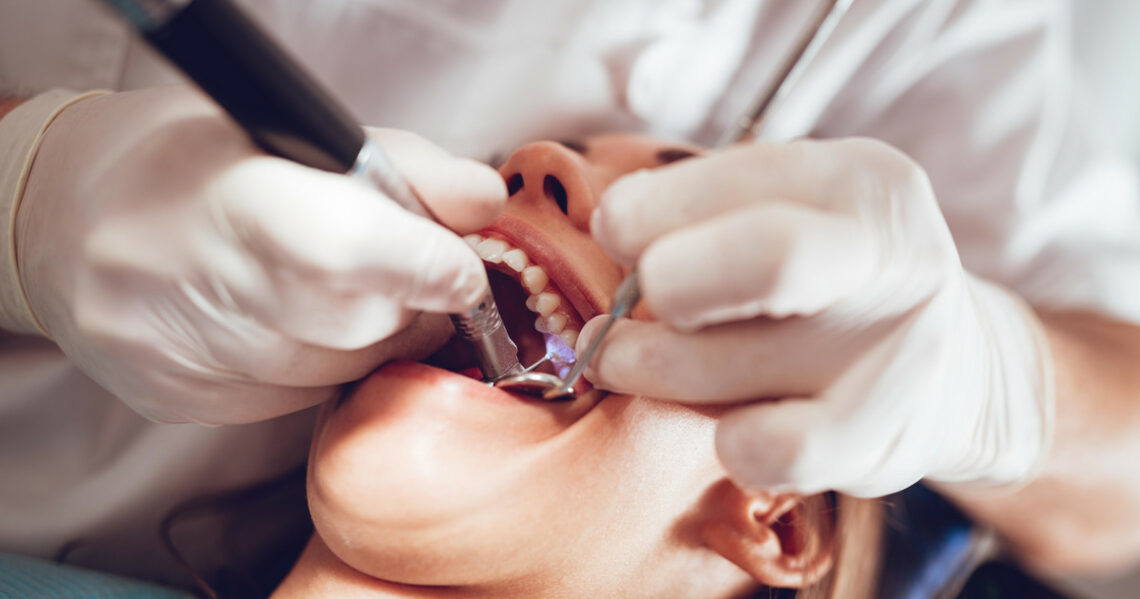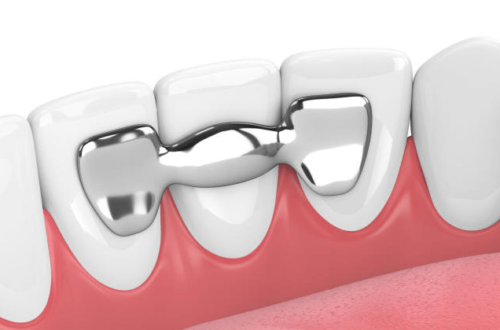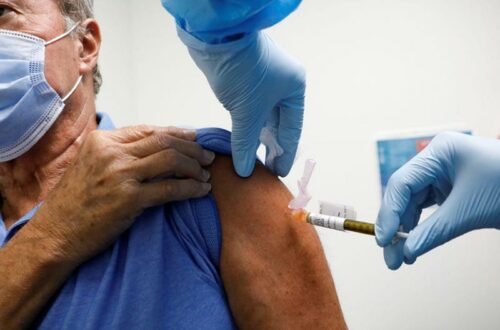
Understanding the Need for Tooth Extraction: When and Why it’s Necessary
In this article, we will delve into the reasons why tooth extraction may be recommended by your dentist. We will explore common scenarios such as overcrowding, infection, trauma, and more, shedding light on when and why tooth extraction is necessary. By understanding the underlying causes and potential long-term consequences, you can make an informed decision about your dental health.
Whether you are considering tooth extraction or simply want to expand your knowledge, this article will provide you with the necessary insights. So, join us as we explore the world of tooth extraction and gain a deeper understanding of this dental procedure.
Do you dream of a new, beautiful smile? A perfect solution will be the reconstruction of teeth with the use of the Poznan prosthesis service. Qualified specialists from the Stankowscy-Białach dental clinic will do it for you!
Common reasons for tooth extraction
Tooth extraction is a dental procedure that involves the complete removal of a tooth from its socket in the jawbone. While it may sound like an extreme measure, there are several situations where tooth extraction is necessary for the overall health of your mouth. Let’s take a closer look at some of the common reasons for tooth extraction.
1. Severe decay or damage
One of the most common reasons for tooth extraction is severe tooth decay or damage that cannot be repaired through other dental treatments such as fillings or crowns. When a tooth is extensively decayed or damaged, it may be necessary to extract the tooth to prevent further complications such as infections or abscesses.
2. Overcrowding
Overcrowding occurs when there is insufficient space in your mouth to accommodate all your teeth properly. This can lead to various dental issues, including misalignment, crooked teeth, and difficulty in maintaining proper oral hygiene. In such cases, tooth extraction may be recommended to create space for orthodontic treatment or to prevent future dental problems.
3. Impacted wisdom teeth
Wisdom teeth, also known as third molars, are the last teeth to erupt in the mouth. However, due to lack of space or their misalignment, they often become impacted or trapped beneath the gum line. Impacted wisdom teeth can cause pain, infection, and damage to neighboring teeth. In such cases, extraction of the impacted wisdom teeth is usually the best course of action.
4. Infection or risk of infection
Infections in the tooth or surrounding gum tissue can be a serious oral health concern. If a tooth is severely infected and cannot be effectively treated with antibiotics or root canal therapy, extraction may be necessary to prevent the spread of infection to other areas of the mouth.
5. Trauma or injury
Accidents or injuries to the mouth can result in tooth fractures or dislodgment. In some cases, the damage may be so extensive that extraction is the only viable option. Tooth extraction may also be necessary if a tooth is fractured below the gum line and cannot be repaired.
6. Orthodontic treatment
Orthodontic treatment, such as braces or aligners, is often employed to correct misalignment or bite issues. In some cases, tooth extraction may be required as part of the orthodontic treatment plan to create the necessary space for proper alignment of the remaining teeth.
The reasons for tooth extraction can vary, but in each scenario, the goal is to preserve the overall health of the mouth and prevent further complications. If you are experiencing any of these issues, it is important to consult with your dentist to determine if tooth extraction is the best course of action.
Types of tooth extraction procedures
Tooth extraction procedures can be broadly classified into two types: simple extractions and surgical extractions. The type of extraction recommended by your dentist will depend on the specific circumstances and complexity of your case.
1. Simple extractions
Simple extractions are performed on teeth that are visible and easily accessible in the mouth. During a simple extraction, your dentist will use a specialized instrument called an elevator to loosen the tooth and a pair of forceps to gently remove it from the socket. Local anesthesia is typically used to numb the area and minimize discomfort during the procedure.
Simple extractions are commonly performed for teeth that are decayed, damaged, or loose. The procedure is relatively quick and straightforward, with minimal discomfort and recovery time.
2. Surgical extractions
Surgical extractions are more complex and are typically performed on teeth that are not easily accessible or have not fully erupted. This includes impacted wisdom teeth or teeth that have broken off at the gum line. Surgical extractions may also be necessary for teeth with extensive root systems or for patients who have certain medical conditions.
During a surgical extraction, your dentist or oral surgeon may need to make a small incision in the gum tissue to access the tooth. In some cases, it may be necessary to remove a small amount of bone surrounding the tooth or to divide the tooth into smaller pieces for easier removal. Local or general anesthesia is usually administered to ensure your comfort during the procedure.
Surgical extractions may require a longer recovery period compared to simple extractions, and your dentist will provide you with specific aftercare instructions to promote healing.
Signs that indicate the need for tooth extraction
Knowing the signs that indicate the need for tooth extraction can help you seek prompt dental care and prevent further complications. If you experience any of the following symptoms, it is important to schedule an appointment with your dentist for an evaluation.
1. Severe tooth pain or sensitivity
Persistent or severe tooth pain or sensitivity can be a sign of an underlying issue that may require tooth extraction. This could be due to deep decay, infection, or damage to the tooth structure.
2. Swelling or infection
Swelling or infection in the gum tissue surrounding a tooth can indicate the presence of an abscess. An abscess is a pocket of pus caused by a bacterial infection. If left untreated, the infection can spread to other parts of the mouth and even to other areas of the body. Tooth extraction may be necessary to remove the source of the infection and prevent its spread.
3. Loose or shifting teeth
If you notice that your teeth are becoming loose or shifting out of alignment, it may be a sign of advanced gum disease or bone loss. In some cases, tooth extraction may be necessary to prevent further damage to the surrounding teeth and gums.
4. Impacted or partially erupted wisdom teeth
Impacted wisdom teeth can cause pain, swelling, and infection. If you experience any of these symptoms, especially in the back of your mouth, it is important to consult with your dentist. They may recommend tooth extraction to alleviate the discomfort and prevent future complications.
5. Chronic bad breath or a bad taste in the mouth
Persistent bad breath or a foul taste in the mouth can be indicative of an underlying dental problem, such as a deep cavity or an infection. If other treatment options have been exhausted, tooth extraction may be necessary to eliminate the source of the odor or taste.
These are just a few of the signs that may indicate the need for tooth extraction. It is important to remember that each case is unique, and a thorough examination by a dental professional is necessary to determine the most appropriate treatment option for your specific situation.
Are you struggling with oral problems? Are you wondering whether tooth extraction will be necessary? Contact the Stankowscy-Białach dental clinic!
Preparing for a tooth extraction
Preparing for a tooth extraction involves a few essential steps to ensure a smooth and successful procedure. By following these guidelines, you can help minimize any potential risks and ensure a comfortable experience.
1. Consultation and evaluation
The first step in preparing for a tooth extraction is to schedule a consultation with your dentist. During this appointment, your dentist will evaluate your oral health, take any necessary X-rays, and discuss the procedure in detail. They will also review your medical history and any medications or supplements you may be taking to ensure that there are no contraindications or additional precautions that need to be taken.
2. Medication adjustments
If you are taking any medications or supplements that may increase the risk of bleeding or interfere with the healing process, your dentist may advise temporary adjustments. This can include discontinuing certain medications or adjusting the dosage as necessary. It is important to follow your dentist’s instructions closely and inform them of any changes to your medication regimen.
3. Fasting and hydration
Depending on the type of anesthesia used during the tooth extraction, your dentist may recommend fasting for a certain period before the procedure. This is to ensure that your stomach is empty and reduce the risk of complications during the anesthesia administration. Your dentist will provide specific instructions regarding the fasting period.
Additionally, it is important to stay hydrated before the procedure. Drinking plenty of water can help maintain your overall health and make the vein access for the anesthesia administration easier.
4. Make arrangements for transportation
If you are undergoing a surgical extraction that requires the use of general anesthesia or sedation, it is important to arrange for transportation to and from the dental office. General anesthesia can temporarily impair your cognitive function and reflexes, making it unsafe to drive or operate machinery immediately after the procedure.
By making these necessary preparations, you can ensure a smooth and successful tooth extraction. It is important to communicate openly with your dentist and address any concerns or questions you may have before the procedure.
What to expect during a tooth extraction procedure
Knowing what to expect during a tooth extraction procedure can help alleviate any anxiety or uncertainty you may have. While each case is unique, the general steps involved in a tooth extraction are relatively consistent. Let’s take a closer look at what typically happens during a tooth extraction.
1. Anesthesia administration
Before the tooth extraction, your dentist will administer anesthesia to numb the area and ensure your comfort during the procedure. The type of anesthesia used will depend on the complexity of the extraction and your personal preferences. Local anesthesia is commonly used for simple extractions, while surgical extractions may require general anesthesia or intravenous sedation.
2. Tooth loosening and removal
Once the anesthesia has taken effect, your dentist will begin the extraction process. For simple extractions, a specialized instrument called an elevator may be used to gently loosen the tooth from its socket. Forceps are then used to carefully remove the tooth from the jawbone.
In the case of surgical extractions, an incision may be made in the gum tissue to access the tooth. In some instances, it may be necessary to remove a small amount of bone or to divide the tooth into smaller pieces for easier removal.
3. Cleaning and suturing (if necessary)
After the tooth has been removed, your dentist will thoroughly clean the extraction site to remove any debris or bacteria. In some cases, particularly for surgical extractions, sutures may be required to close the incision and promote proper healing. Your dentist will determine if sutures are necessary based on the complexity of the extraction and your individual needs.
4. Post-extraction instructions and aftercare
Following the extraction, your dentist will provide you with specific instructions for post-operative care. This may include guidelines for managing pain and swelling, recommendations for diet and oral hygiene, and instructions for taking any prescribed medications. It is crucial to follow these instructions closely to promote healing and minimize the risk of complications.
5. Follow-up appointments
Your dentist will schedule follow-up appointments to monitor the healing process and ensure that no complications arise. It is important to attend these appointments and communicate any concerns or issues you may be experiencing.
By understanding the general steps involved in a tooth extraction and knowing what to expect, you can approach the procedure with greater confidence and peace of mind.
Aftercare and recovery tips for tooth extraction
Proper aftercare and recovery are crucial for the success of a tooth extraction procedure. Following your dentist’s instructions and taking care of the extraction site can help minimize discomfort, reduce the risk of complications, and promote faster healing. Here are some essential aftercare and recovery tips to keep in mind:
1. Manage pain and swelling
It is normal to experience some degree of pain and swelling after a tooth extraction. Your dentist may prescribe pain medications or recommend over-the-counter pain relievers to help manage any discomfort. Applying an ice pack to the outside of your face in the area of the extraction can also help reduce swelling. Be sure to follow your dentist’s instructions regarding medication usage and application of ice.
2. Eat soft foods
For the first few days after the extraction, it is important to stick to a soft-food diet to avoid putting unnecessary pressure on the extraction site. Opt for foods such as yogurt, mashed potatoes, soup, scrambled eggs, and smoothies. Avoid hard or crunchy foods, as well as foods that are too hot or spicy, as they can irritate the extraction site and impede the healing process.
3. Maintain proper oral hygiene
Keeping your mouth clean is crucial for preventing infection and promoting healing. However, it is important to avoid rinsing, spitting, or using mouthwash for the first 24 hours after the extraction to allow the blood clot to form properly. After this initial period, gently rinse your mouth with warm saltwater to keep the extraction site clean. Be careful not to brush the extraction site directly to avoid dislodging the blood clot.
4. Avoid strenuous activities
Engaging in strenuous physical activities can increase blood flow and potentially dislodge the blood clot in the extraction site. It is important to avoid activities such as heavy lifting, intense exercise, or any activity that may put unnecessary strain on your body for at least 24 to 48 hours after the procedure. Resting and taking it easy during the initial recovery period can help promote faster healing.
5. Follow your dentist’s instructions
Your dentist will provide you with specific aftercare instructions tailored to your individual needs. It is important to follow these instructions closely and contact your dentist if you have any concerns or questions during the recovery period. Attend all follow-up appointments as scheduled to ensure that the extraction site is healing properly and to address any potential complications.
By following these aftercare and recovery tips, you can help ensure a smooth healing process and minimize any potential complications after a tooth extraction.


